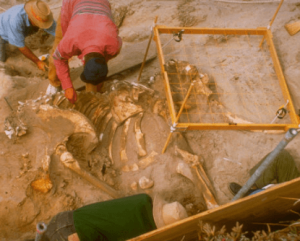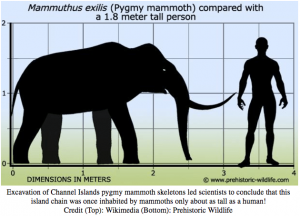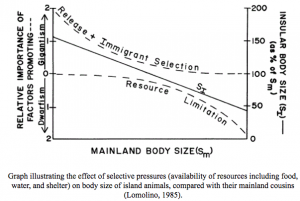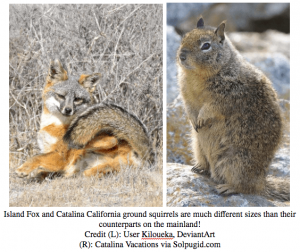
Islands can be pretty awesome places. From the volcanic islands of Hawai’i and the Galapagos, to the mangrove islands of the Florida Keys, to the sandy beaches of the Caribbean, and even the rocky desert islands off the coast of California, islands represent many different types of ecosystems. As different as islands can be, their natural inhabitants can be incredibly unique themselves.
 Whenever animals become isolated on islands, they can undergo extreme changes in size. This is usually as a result of an increase or decrease in natural resources such as food or water as well as a decrease or increase in predators. This is known as the Island Rule and was first proposed by biologist J. Bristol Forster in 1964. Forster studied 116 different Species of island dwelling animals and published his findings in the scientific journal Nature. Forster’s studies revealed that in many cases, smaller animals such as rodents had become larger, but larger animals and most carnivores became smaller. In the case of carnivores and larger animals like elephants, the islands that they ended up on simply could not support animals of their sizes. The bigger the animal, the more resources it would need. The only way for a species to survive was to become smaller. Rodents, on the other hand, would be coming into a new environment much more suitable for animals of their stature. They would often find more food with less competition allowing more individuals to grow to their maximum potential.
Whenever animals become isolated on islands, they can undergo extreme changes in size. This is usually as a result of an increase or decrease in natural resources such as food or water as well as a decrease or increase in predators. This is known as the Island Rule and was first proposed by biologist J. Bristol Forster in 1964. Forster studied 116 different Species of island dwelling animals and published his findings in the scientific journal Nature. Forster’s studies revealed that in many cases, smaller animals such as rodents had become larger, but larger animals and most carnivores became smaller. In the case of carnivores and larger animals like elephants, the islands that they ended up on simply could not support animals of their sizes. The bigger the animal, the more resources it would need. The only way for a species to survive was to become smaller. Rodents, on the other hand, would be coming into a new environment much more suitable for animals of their stature. They would often find more food with less competition allowing more individuals to grow to their maximum potential.

The Channel Islands off of the California coast including Catalina have some perfect examples of the island rule. The three northern most Channel Islands San Miguel, Santa Rosa, and Santa Cruz, all contain remains of pygmy mammoths. Pygmy mammoths were believed to have been Columbian mammoths that swam across the channel and shrank due to lack of water and vegetation. Pygmy mammoths like their mainland cousins all went extinct thousands of years ago.


Some living examples of the island rule are the channel island fox and Catalina California ground squirrel. The Channel Island fox is a direct descendant of the North American gray fox but like the pygmy mammoth, it shrank due to lack of resources. Channel Island foxes are only half the size of gray foxes found on the mainland. However, when Catalina California ground squirrels arrived to the island, they found themselves not only with an abundance of food but also a lack of competition. They were and are currently the only species of squirrel on the island. No other species of squirrel are around to divide the natural resources and only a fraction of their natural predators exist on the island to limit their population. These factors have led the Catalina California ground squirrel to grow larger than all other regional populations of the same species.


So next time you spot some island wildlife, think about the unique challenges the species faced when it became detached from its cousins in a larger environment, and the tradeoffs it had to make to become better suited to a smaller space and scrappier pool of resources. We can all marvel that while a tortoise towering over a fox might seem strange today, who knows… in a few more million years, or a ground squirrel might be the same size a mammoth once was… now that thought makes us a little squirrelly!


